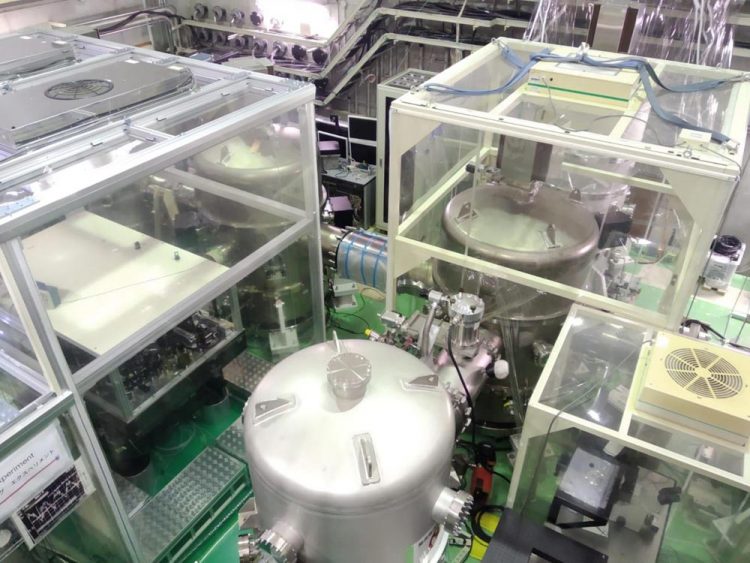TAMA300 blazes trail for improved gravitational wave astronomy

Vacuum chambers in the infrastructure of the former TAMA300 detector used in this experiment. Credit: NAOJ
When it began observations in 2000, TAMA300 was one of the world's first large-scale interferometric gravitational wave detectors. At that time TAMA300 had the highest sensitivity in the world, setting an upper limit on the strength of gravitational wave signals; but the first detection of actual gravitational waves was made 15 years later in 2015 by LIGO.
Since then detector technology has improved to the point that modern detectors are observing several signals per month. The scientific results obtained from these observations are already impressive and many more are expected in the next decades.
TAMA300 is no longer participating in observations, but is still active, acting as a testbed for new technologies to improve other detectors.
The sensitivity of current and future gravitational wave detectors is limited at almost all the frequencies by quantum noise caused by the effects of vacuum fluctuations of the electromagnetic fields.
But even this inherent quantum noise can be sidestepped. It is possible to manipulate the vacuum fluctuations to redistribute the quantum uncertainties, deceasing one type of noise at the expense of increasing a different, less obstructive type of noise.
This technique, known as vacuum squeezing, has already been implemented in gravitational wave detectors, greatly increasing their sensitivity to higher frequency gravitational waves.
But the optomechanical interaction between the electromagnetic field and the mirrors of the detector cause the effects of vacuum squeezing to change depending on the frequency.
So at low frequencies vacuum squeezing increases the wrong type of noise, actually degrading sensitivity.
To overcome this limitation and achieve reduced noise at all frequencies, a team at NAOJ composed of members of the in-house Gravitational Wave Science Project and the KAGRA collaboration (but also including researchers of the Virgo and GEO collaborations) has recently demonstrated the feasibility of a technique known as frequency dependent vacuum squeezing, at the frequencies useful for gravitational wave detectors.
Because the detector itself interacts with the electromagnetic fields differently depending on the frequency, the team used the infrastructure of the former TAMA300 detector to create a field which itself varies depending on frequency.
A normal (frequency independent) squeezed vacuum field is reflected off an optical cavity 300-m long, such that a frequency dependence is imprinted and it is able counteract the optomechanical effect of the interferometer.
This technique will allow improved sensitivity at both high and low frequencies simultaneously. This is a crucial result demonstrating a key-technology to improve the sensitivity of future detectors. Its implementation, planned as a near term upgrade together with other improvements, is expected to double the observation range of second-generation detectors.
Media Contact
More Information:
https://www.nao.ac.jp/en/news/science/2020/20200428-gwsp.htmlAll latest news from the category: Physics and Astronomy
This area deals with the fundamental laws and building blocks of nature and how they interact, the properties and the behavior of matter, and research into space and time and their structures.
innovations-report provides in-depth reports and articles on subjects such as astrophysics, laser technologies, nuclear, quantum, particle and solid-state physics, nanotechnologies, planetary research and findings (Mars, Venus) and developments related to the Hubble Telescope.
Newest articles

Properties of new materials for microchips
… can now be measured well. Reseachers of Delft University of Technology demonstrated measuring performance properties of ultrathin silicon membranes. Making ever smaller and more powerful chips requires new ultrathin…

Floating solar’s potential
… to support sustainable development by addressing climate, water, and energy goals holistically. A new study published this week in Nature Energy raises the potential for floating solar photovoltaics (FPV)…

Skyrmions move at record speeds
… a step towards the computing of the future. An international research team led by scientists from the CNRS1 has discovered that the magnetic nanobubbles2 known as skyrmions can be…





















